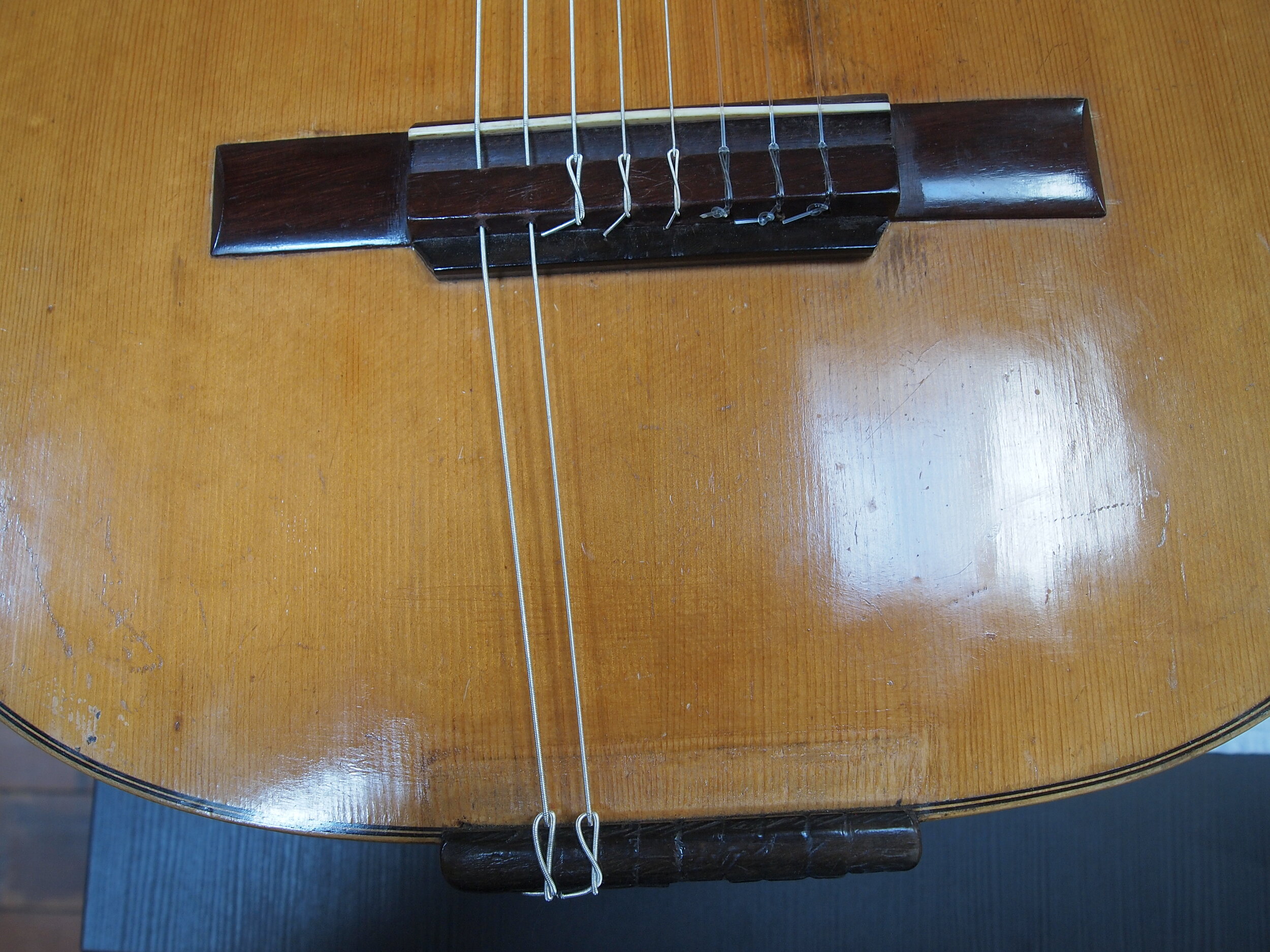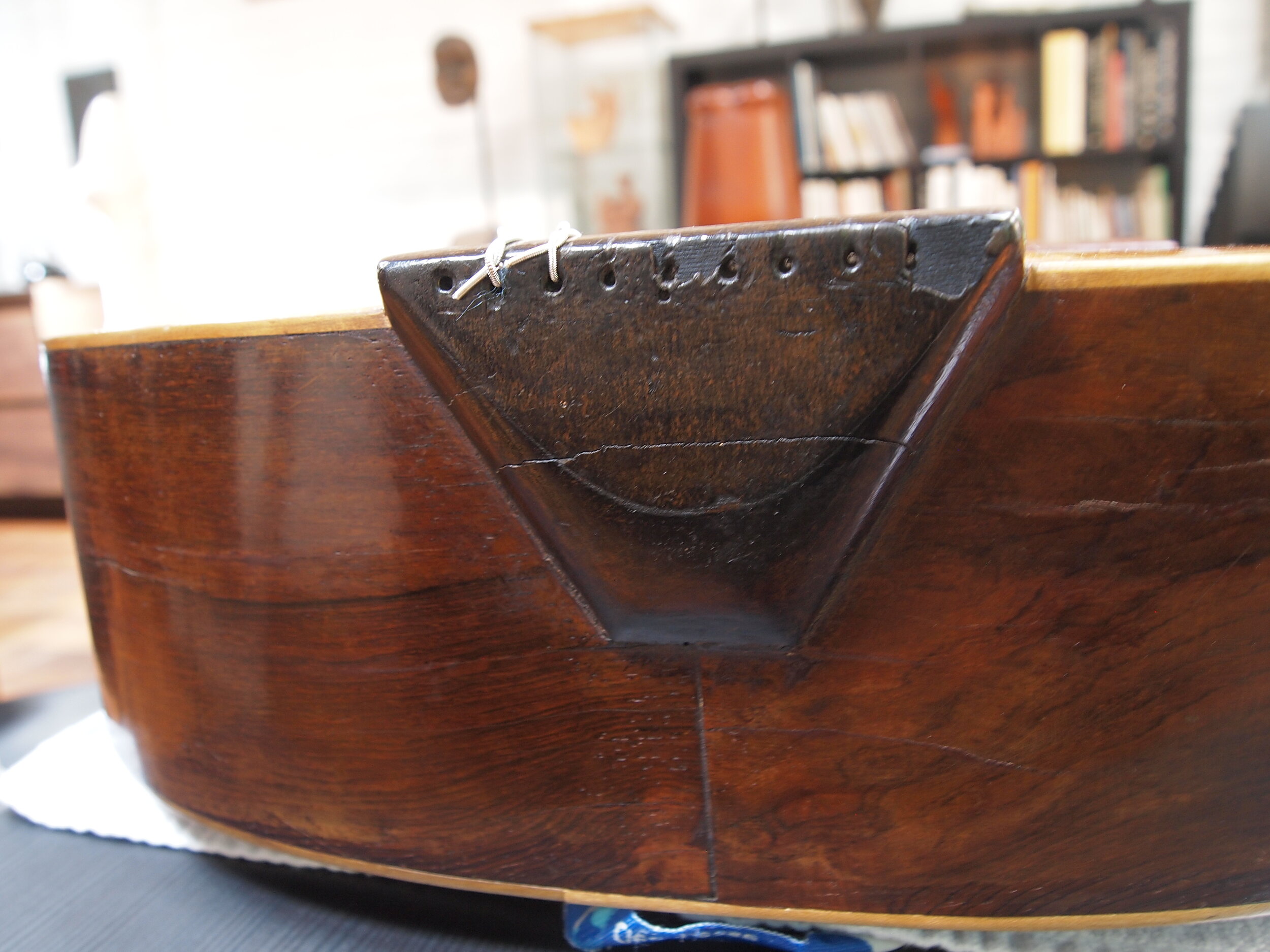A name often mentioned alongside Antonio De Torres - himself regarded as the founder of the modern classical guitar - and equally esteemed by those in the know, is Vicente Arias, who was Torres’ contemporary. People have consistently been drawn towards Arias’ work. I saw his work for the first time when I visited Granary Guitars ten years ago. I also had the pleasure to measure a particularly special Vicente Arias guitar - the subject of this blog post - with a view to making a copy.
The guitar was a marvelous instrument which had eight strings, was magnificently large and had a brilliant, rather intimidating and loud sound. Sitting down to play it was like sitting in front of a grand piano. The spruce top, after over a hundred years of eight-string tension, I remember thinking was waved like the surface of water. As can be seen from the few photos I took, it’s also a guitar of innovation, with an extremely elegant extra soundhole and a tailpiece of sorts, along with a new bridge design. Indeed, apart from the flairs of workmanship which seem to give many older guitars more soul than guitars in this era, one of the main points I took away from this guitar was Arias’ confidence and flair for innovation.
This innovative spirit is something so key to guitar making, and everyone’s favorite makers have had it. The motivating factor behind it is finding one’s unique sound. All the old masters did this and many modern masters have succeeded too; I hope to follow their example, although building copies is an interesting exercise which can ultimately help. My upcoming guitar is a rather experimental instrument, where not only is it my first nomex double-top guitar, but it has an elevated fingerboard and other innovations too.
Below are pictures of the Arias guitar and I have also included a recording by the brilliant guitarist Raphaella Smits; she recorded a whole album on the guitar, playing the works of Antonio Jiménez Manjón, a composer of the same period as the guitar. If you haven’t heard of Raphaella Smits, I would recommend her whole catalogue of work, and I particularly enjoy her ‘Ave Maria’ album. On that album, she has a suite by Henry Purcell, a very famous English composer, which I guess she must have laboriously transcribed from the original music which was meant for harpsichord - the harsh and grating harpsichord - and I can’t say how much I thought the music was truly improved for being played on the 8 string guitar instead and with Raphaella’s particular moody gravitas. Just the prelude of which I have included below.




